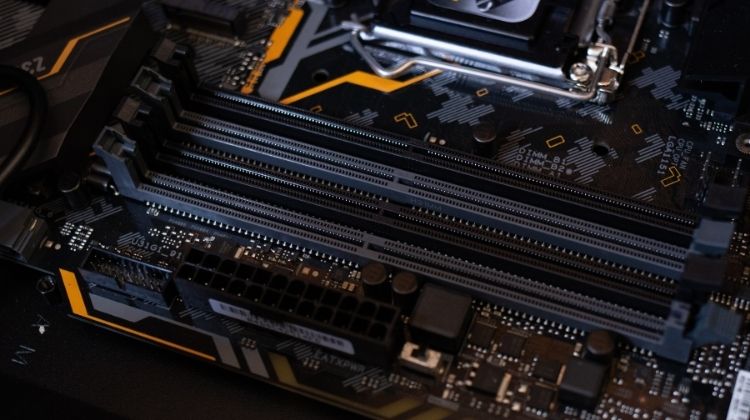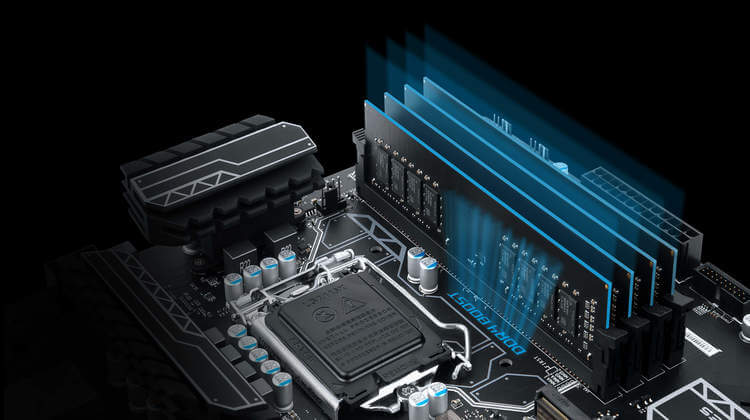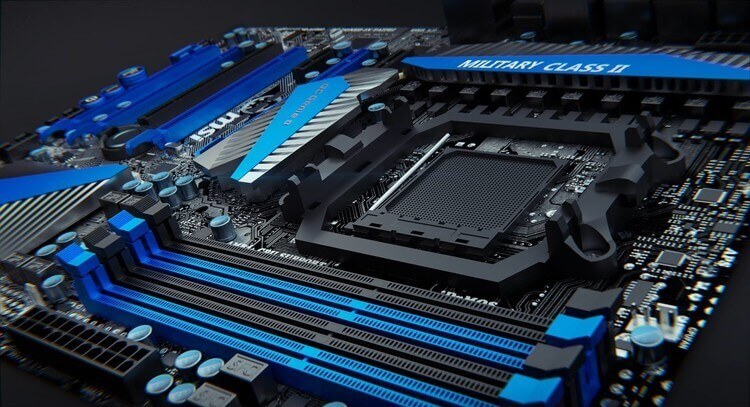
When building or buying a new computer, one of the most important choices is the motherboard form factor. The two most popular small form factor options are mini ITX and micro ATX (sometimes written as mini-ITX and micro-ATX). Understanding the differences between mini ITX and micro ATX is key to selecting the right motherboard size.
Mini ITX is the smallest consumer motherboard form factor available, while micro ATX is slightly larger. Both mini ITX and micro ATX are smaller than the standard ATX motherboards. To build a compact PC, mini ITX and micro ATX allow for smaller cases and better portability. However, the smaller size also means fewer expansion slots and connectivity options than a full ATX board.
This article will compare mini ITX vs. micro ATX motherboards in-depth, looking at size, expansion slots, IO ports, power phases, and more. We’ll also discuss which form factor is better for various use cases like gaming PCs, home theater PCs, small business systems, and other applications. By the end, you’ll know whether micro ATX or mini ITX is the best choice for your next PC build or upgrade.
What Is Micro ATX Form Factor?
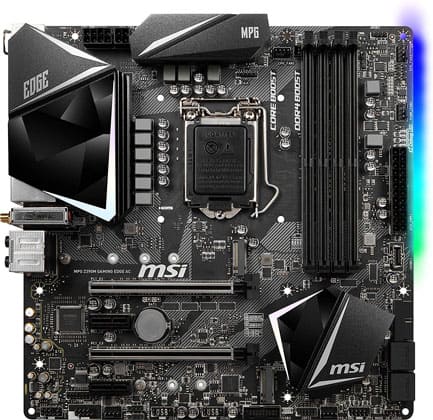
Micro ATX
After the motherboard’s standard ATX form factor, one of the more recent versions is Micro ATX. Also, the Micro ATX is not different from the standard ATX form factor. You can name Micro ATX the smaller sibling of standard ATX. Chiefly, its launching took place in 1997, and knowingly, it was backward compatible with standard ATX.
To this day, its I/O panel is similar to ATX, and the mounting point of Micro ATX is the subset of ATX. Moreover, the Micro ATX uses the exact chipsets that are like standard ATX. It tells that you can utilize it no matter if they are made for ATX motherboards. There is not much difference between Micro ATX and ATX in general.
Despite all these similarities between the two, the Micro ATX expansion slots are insufficient. Further, the standard ATX has seven expansion slots for PCI Express. On the other hand, the expansion slots in Micro ATX for PCI Express are only four.
Also Read: ASUS vs MSI Motherboards
Several integrated peripherals have been added in the Micro ATX to fill the gap created due to PCIe’s limited expansion slots. Therefore, after adding many integrated peripherals, there is no need for extra expansion slots in Micro ATX.
Are you planning to build your personal computer, then the mATX mobo is an affordable option. But always keep in mind that the opportunity for expansion is limited.
There are two slots for graphical processing units and four slots for memory set up in the latest versions of motherboards. So, there is no more requirement for additional expansion slots, unlike ATX.
Besides, ATX vs mATX is another comparison that people make these days.
- An excellent choice for gamers
- Big enough to fit most situations
- Affordable in most cases
- Four slots for PCIe
- Only for a single GUI step up
Related: Best Motherboard For Ryzen 9 5900x
What Is Mini ITX Form Factor?
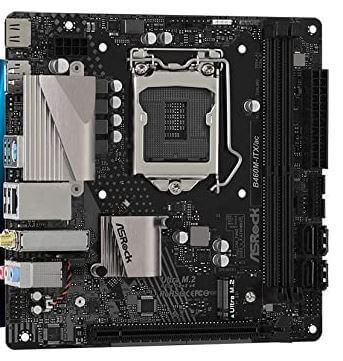
Mini ITX
Mini ITX motherboard form factor was released in 2001 since then; it is one of the motherboard’s most successful form factors. Why is it created when there were ATX and Micro ATX form factors available in the market at that time? Its creation is for PC builts in which there is no fan to cool down the system. Also, it is for the user who demands a motherboard that consumes less power than the previous and bulkier motherboards.
ITX vs Micro ATX is the general comparison every gamers and motherboard buyer makes when investing money in it. Moreover, the Mini ITX mobos are for those users who require low noise when their system is functioning.
Also Read: B550 Vs X570
Moreover, in ITX vs ATX, saying which one is better is ridiculous as some people say the compact mobo is their need while others say they want extra features and expansion slots in their motherboard. It has four mounting ports that are fixable to standard ATX motherboards; also, PCIe expansion slots are similar. Originally its creation was to provide only expansion slots.
This Mini ITX size can support only two memory slots means it can hold up to 32 Gb with two 16 Gb cards. But this isn’t the downfall of the Micro ITX motherboard, as 32 Gb memory is more than enough for a gamer while not making the system bulky. You can handle a lot of heavy computing tasks and get peak performance with this memory setup.
Further, with all these great features it has some drawbacks as well. With this compact design, its PCIe slots are at the corner. Therefore, it is challenging to fit GUI in some cases, which is its negative aspect.
- Ideal for standard PC use
- Best for portable PC built
- Lightweight
- Adding graphics card is challenging
- PCIe slots are at the corner
Related: Best Motherboards For i5 10600k
Micro ATX vs Mini ITX [ Comparison ]
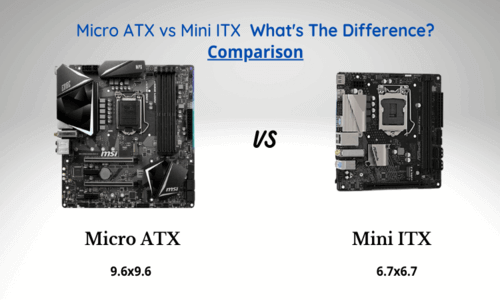
Comparing Some Aspects Of Micro Atx vs Mini Itx below:
Size:
The main difference between micro ATX and Mini ITX is the size. So, we are going to analyze them as per their size. Firstly, the Micro ATX size dimensions are 244 by 244 millimeters. Secondly, the Mini ITX size dimensions are 170 by 170 millimeters.
But size is not a big issue when choosing the best motherboard form factor from the market. However, it is not wise to pick a Micro ATX motherboard if you have a Mini ITX case because it doesn’t make sense. Moreover, the issue of each form factor is specific; therefore, consider this fact in mind.
Layout:
The most important thing to consider when buying any motherboard is the layout as every form factor have their configuration. Moreover, the Micro ATX offers 4 PCI Express expansion slots to its users, while the Mini ITX only provides 1 PCIe slot for expansion purposes.
We recommend you to buy the matx motherboard if you want to upgrade your system in the future as this option is available in this form factor of the motherboard. In short, the single PCI Express expansion slot in Mini ITX limits you to add more GUIs, sound cards, and much more if you are an enthusiast gamer. That’s why Micro ATX is popular among gamers. But those who want to build a lightweight and quality system, then mITX motherboard is a good option.
Another important thing is that the expansion slot of Mini ITX is at the edge of the motherboard. Therefore, you may struggle to add an extra graphics card in this slot. Further, if you want to add additional memory, GUIs, and sound card simultaneously, then the clear winner of ITX vs Micro ATX is Micro ATX.
Related: Best Motherboard For Ryzen 7 3700x
Memory Capacity:
Micro ATX possesses four slots for memory adding. Therefore it means you can add four 16 Gb or more RAMs in each slot and get a maximum of 64 Gb or more RAM while customizing this form factor of the motherboard. It is a sought-after motherboard because of this fantastic feature.
On the other hand, the Mini ITX form factor has two memory modules. So, you can add a maximum of 32 Gb RAM with 16 Gb memory adding per slot. But this memory size is perfect in most situations like intense gaming. But when it comes to memory holding challenge, then in Micro ATX vs Mini ITX, the Micro ATX is a conqueror.
Price:
Taking into account the price factor is the most common thing many buyers do. But it’s all up to you which type of form factor if motherboard you want. Do you want to cut some unnecessary specs to cut the price? Or Are you looking for a motherboard with many advanced features? Therefore, these are the queries you should ask yourself before doing anything corresponding to purchase.
Many unaware people think that Micro ATX may be the most expensive form factor of the motherboard as its characteristics lie in the middle of standard ATX and Mini ITX, but it is not the case. Also, it is the cheapest form factor in the market, but some renowned brands are offering Micro ATX mobo at a much higher price. However, the cost of any form factor of motherboard comes down to the brand’s quality and integrity.
Related: Best Motherboard For i7 10700k
Which One Should You Choose?
The choice should be ultimately yours. Therefore, if you want to buy a motherboard which is offered flexibility and affordability at the same time, then Micro ATX is the best motherboard for you. It comes at a low price in most cases.
It is also perfect for those who don’t want to spend a considerable amount at a time in making a high-performance system but want to gradually build the system by adding GUIs, memory, and improving the processor. Moreover, it is the most popular form factor for the motherboard in the market.
However, if you are looking to create a lightweight PC, buying a Mini ITX motherboard is the right choice. The reason is the Mini ITX size is less than Micro ATX, so in this way, you also need a smart case for it making it a compact option.
But don’t consider Mini ITX a dull option because it can hold a total memory of 32 Gb with two slots for 16 Gb at this size and weight. Further, if you want to build your home theater, this motherboard should be preferred to other motherboard’s form factor.
Conclusion
When comparing mini ITX vs micro ATX motherboards, the main differences are size and expansion capabilities. Mini ITX is the smallest mainstream board size at 6.7 x 6.7 inches, while micro ATX measures 9.6 x 9.6 inches.
If you’re looking to build the smallest PC possible, mini ITX is the way to go. However, its single expansion slot limits future upgrade potential. Micro ATX offers more flexibility with typically 2-4 expansion slots. This makes micro ATX better for compact home theater PCs and basic gaming rigs.
For those prioritizing lots of PCIe slots and drive bays, a full ATX motherboard would be preferable over a mini ITX or micro ATX. Balancing size requirements against hardware expansion needs will determine whether mini ITX or micro ATX is the best fit for your next PC build.
When comparing the smallest motherboard form factors, mini ITX vs micro ATX offers a trade-off between minimal size and upgrade flexibility. Carefully considering your use case will help you decide which suits your compact computing needs.
Related Articles
Best Motherboards For i9 10900k Of 2022 | 10th/11th Gen
Intel’s i9 10900k is a high-end processor that gives excellent performance when paired with a…
Best Motherboard For Ryzen 9 3950x | X570 – Zen2 | Wi-Fi | Guide
The motherboard is the backbone that links all of the computer’s components and helps them…
Best Motherboard For Ryzen 9 3900x 2022 [Tried & Tested]
The introduction of the Ryzen series CPU has made the field immensely revolutionary with 3rd…
Best Motherboards For Ryzen 7 3700x Builds [AMD, X570 Chipsets]
When you have any plans of setting up a Ryzen 7 3700x system, the most…
Best Motherboard for Ryzen 7 2700x | High Performance | Buyer’s Guide |
There is no denying that a motherboard for the processor is not an easy choice…
Best Motherboard For Ryzen 5 3600 [ 10 Top Picks & Guide]
The Ryzen 5 3600 has become one of the sought processors in the world. This…



